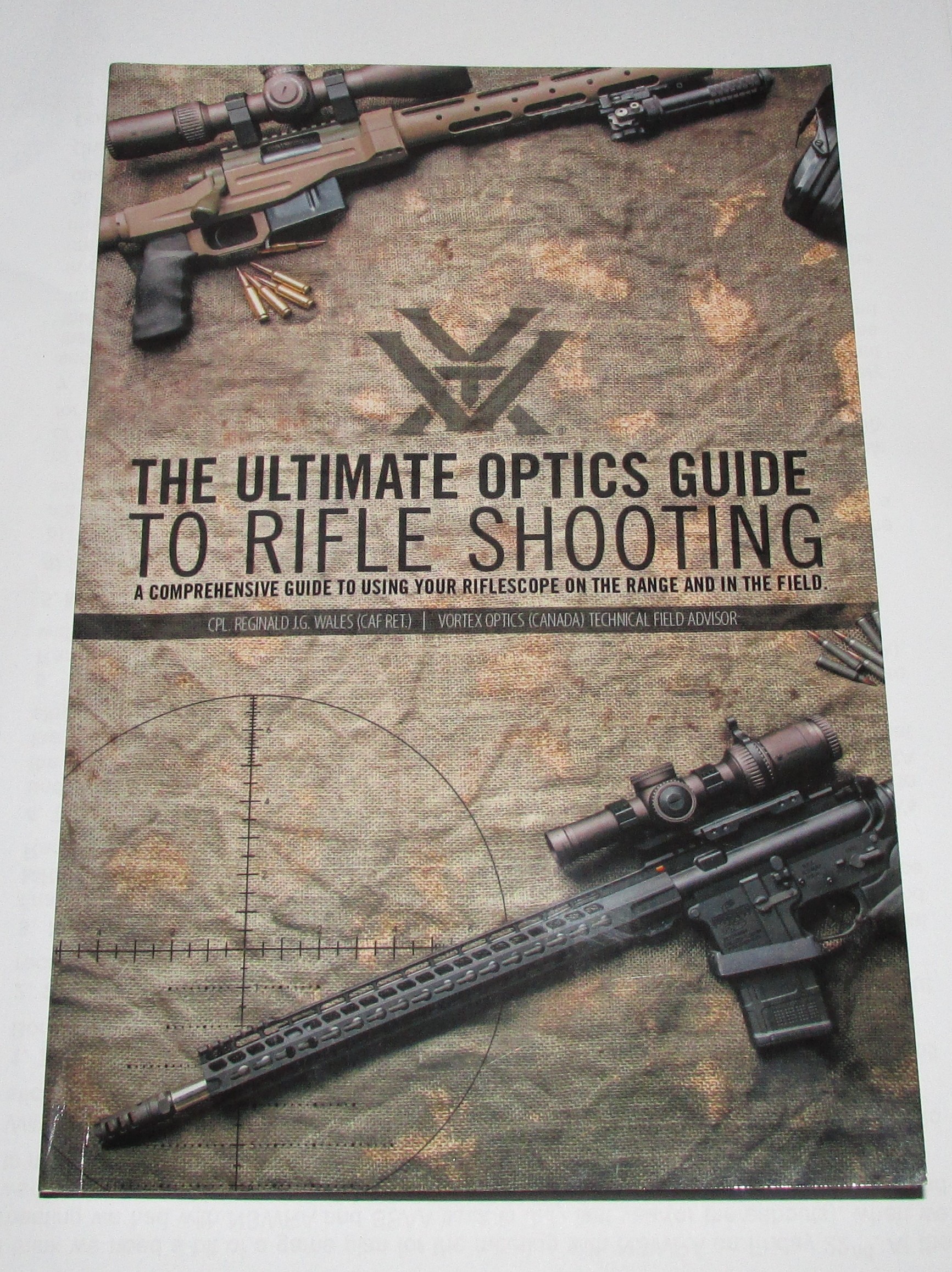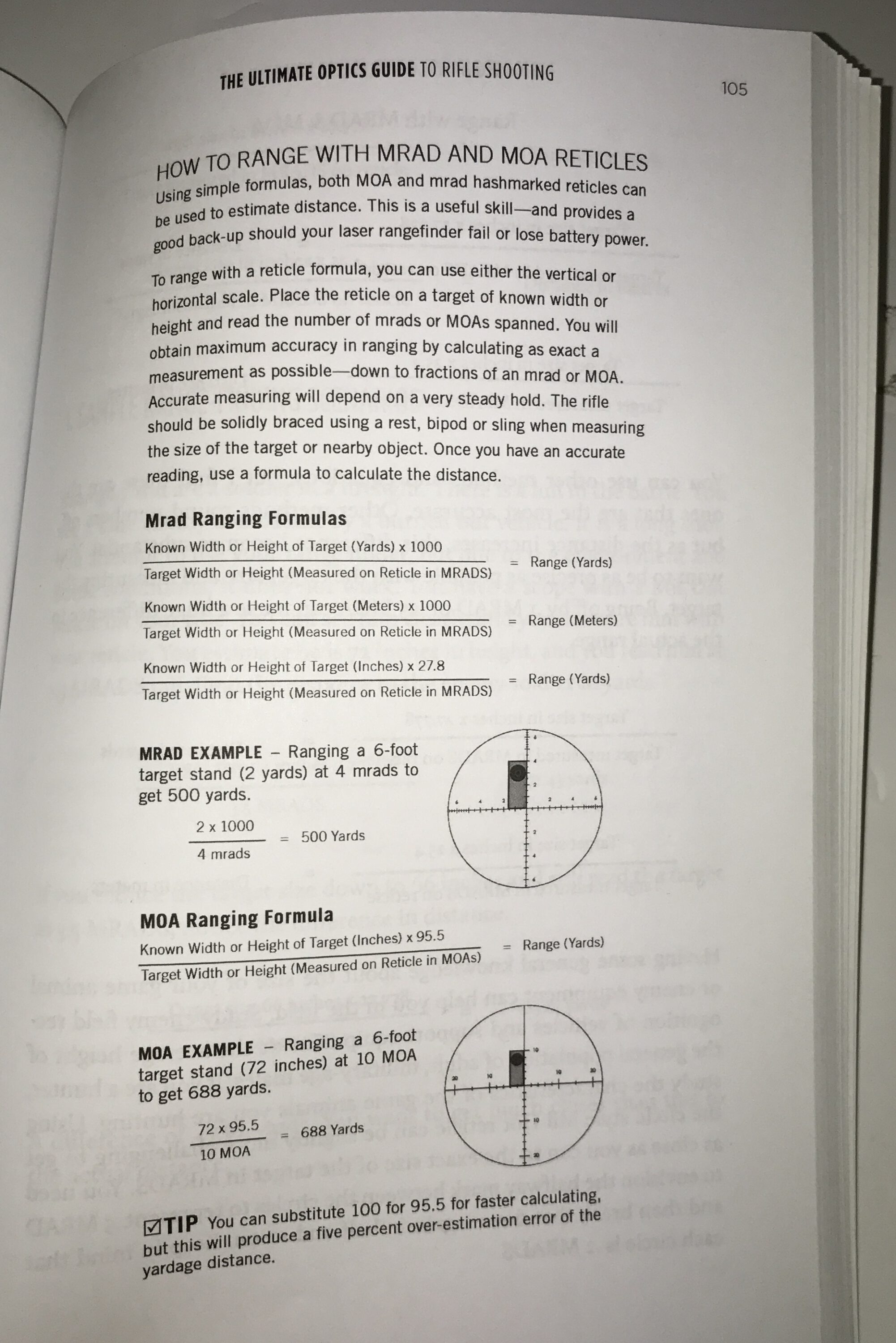
Book Review by Marcus O’Dean
The Ultimate Optics Guide to Rifle Shooting
Author: Corporal Reg Wales (Ret), Published by Friesen Press, Victoria, BC, Canada – 2015. Paperback 186 pages.
This little book would have to be the richest, commonly available source of information for the novice to get on target and understand how he got there.
One disturbing trend in modern times is the phenomenon of the “instant expert” in any one of a number of fields of endeavour. Due to the advent of smart technology that does it all for you eg ballistic “apps” that promise enabling a raw novice to be able to engage tiny targets at long range with very sophisticated weaponry. We unleash on the world a class of shooter who become helpless in the absence of whizz-bang gadgetry … and that is when these neophytes become potentially dangerous. Wales quotes an old hand shooter as saying, “An electronic device is in one of two states; it’s going to fail or it has failed.” That is experience talking.
In an earlier life I was employed as an Artillery Forward Observer and learnt many skills and drills pertaining to observation, simple range estimation and correction of fire and that has been of great use to me as a target and field rifle shooter ever since. The military distils scientific and mathematical principles into simple drills for application when the pressure is on and explains why and how their drills work.
This gives their soldiers not only the skills they need in battle, but also a deeper knowledge of the reasons why those drills work. During Regular Army Officer training in another life, our class was shown the movie Zulu, where a tiny garrison of British soldiers repulsed thousands of tough Zulus by a dogged defence, ably led and applying simple battle drills practised over and over on the Salisbury Plain. While Armies more recently have become somewhat reliant on rugged electronics, their snipers are thoroughly drilled in basics and in many recent operations they have often relied more on their basic drills than computers to hit malcontents way out there – for one thing, it’s quicker than feeding endless data into a palm pilot – and you know the old saying about computers, “S..t in equals S..t out.”

Winding back, Wales starts off with decyphering optics language for the rank beginner, setting up the scope and rifle from tors and all the stuff we would do when getting a new optic and he is comprehensive. But it is when we want to gain skills in shooting out to the maximum effective ranges of shooting systems, using only a reticle and our wits that he shines.
In this great book, Cpl Wales teaches us some underlying concepts and maths to enable us to make hits on targets way out there without having to resort to electronics of any sort, no laser rangefiners, wind meters and barometers, rather he instructs us to ingest some simple theory, dry practice at home and then get into the field and live practise until you have developed your DOPE (Data On Previous Engagements), which can be developed by actually engaging targets in the field and recording elevations, windage application and environmental conditions encountered. Regular readers will also know I have no truck with extreme-range hunting, so I am speaking to gong ringers here.
His coverage of Mil-Rads vs MoA and how they relate, Comparing MoA and Shooter’s MoA is instructive and allows progression to more complex concepts, like Zeroing, Slipping Scales when zeroed, Making Corrections to MPI and The Clean Cold Bore gets us to first base.
Then he educates on Using the Reticle As A Tape Measure and Rangefinding Using The Reticle and that gets us to second base and the basic skills of the military marksman with optical sights set up with a Mil-Rad reticle. Following on is Measuring Unknown Objects, Bullet Drop Compensating Reticles and To Hold Or To Dial.
While all this material is vitally educational in itself, at the end of each logical section in the book, he lists practice questions and exercises, so the reader can cement the concept and practice in his mind. In addition, he suggests that many of the lessons be applied by the shooter in dry firing scenarios in the home.
Now Cpl Wales served his country on military operations overseas and, now in his forties, is employed as Vortex Optics Canadian Field Advisor. While Vortex have contributed to publication, the lessons in this book are applicable across all brands and styles of riflescopes. One has to say a sincere thankyou to Vortex for their input here.
Ask for a copy at your local gun shop. Distributed in Australia by Extravision www.extravision.com.au
0 Comments